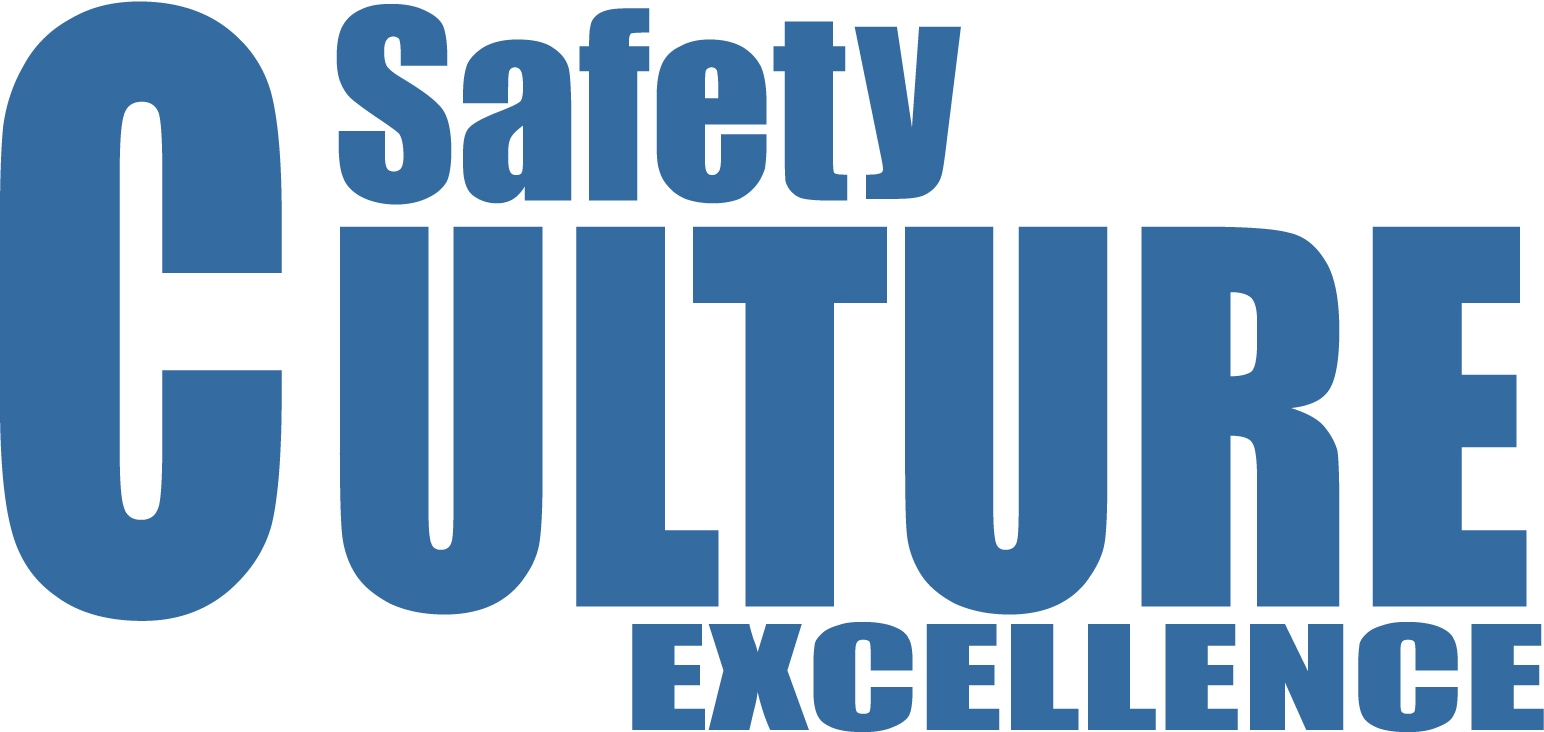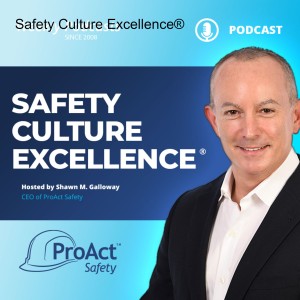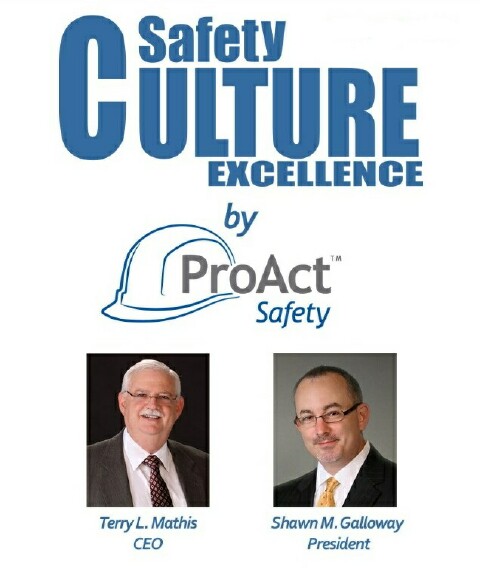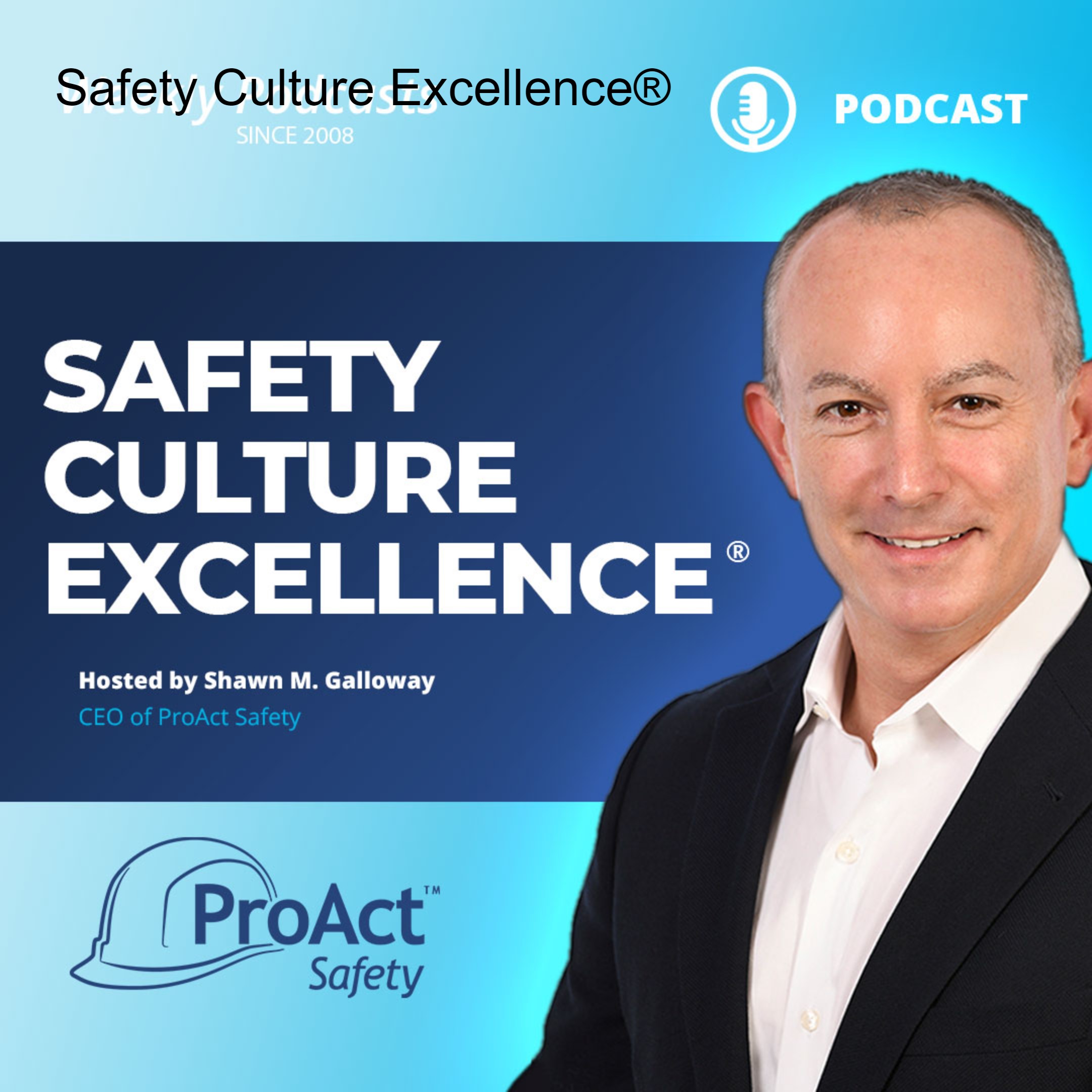Episodes

Monday Feb 03, 2014
327 - Applying the Three As of Employee Engagement
Monday Feb 03, 2014
Monday Feb 03, 2014
327 - Applying the Three As of Employee Engagement
Greetings everyone, this podcast recorded in my home in Texas. I’d like to share an article Terry L. Mathis wrote that was published December 2013 in EHS Today Magazine. The published article can either be found on the magazine’s website or under Insights at www.ProActSafety.com.
I hope you enjoy the podcast this week. If you would like to download or play on demand our other podcasts, please visit the ProAct Safety’s podcast website at: http://www.safetycultureexcellence.com. If you would like access to archived podcasts (older than 90 days – dating back to January 2008) please visit www.ProActSafety.com/Store. For more detailed strategies to achieve and sustain excellence in performance and culture, pick up a copy of our book, STEPS to Safety Culture Excellence - http://proactsafety.com/insights/steps-to-safety-culture-excellence
Have a great week!
Shawn M. Galloway
ProAct Safety

Wednesday Jan 29, 2014
Coaching Safety: Performance vs. Improvement
Wednesday Jan 29, 2014
Wednesday Jan 29, 2014
The most ineffective safety coaching I have ever seen had some great ideas and techniques, but it was based on a bad premise. That premise was that supervisors and leaders should coach the day-to-day performance of their workers in an evaluative manner. They used some powerful interaction models and evaluative techniques, but in the end, it just seemed like the boss’s opinion vs. the worker’s opinion of performance.
The best safety coaching is based on targeted improvements rather than evaluation. Targeting specific improvements (precautions to take or behaviors that contribute to culture) helps coaching in several ways:
- It creates talking points that are friendly and logical (what we agreed to work on) and not subjective (what the boss does or doesn’t like)
- It creates a clear dichotomy of performance (you either took the targeted precaution or you did not) vs. the boss thinks you did well or poorly
- When targeted precautions are not taken, it fosters a discussion of why and why not rather than a judgment of performance
- It creates a communication atmosphere of adult talking to adult vs. adult overseeing child
- It creates the expectation that safety is about getting better not just staying the same
Safety coaching can be an effective tool for supervisors and leaders when done in this way. When organizations learn how to improve safety, it is an easy and logical step to apply targeted-improvement coaching to other performance issues as well.
-Terry L. Mathis
Terry L. Mathis is the founder and CEO of ProAct Safety, an international safety and performance excellence firm. He is known for his dynamic presentations in the fields of behavioral and cultural safety, leadership, and operational performance, and is a regular speaker at ASSE, NSC, and numerous company and industry conferences. EHS Today listed Terry as a Safety Guru in ‘The 50 People Who Most Influenced EHS in 2010, 2011 and 2012-2013. He has been a frequent contributor to industry magazines for over 15 years and is the coauthor of STEPS to Safety Culture Excellence, 2013, WILEY.


Wednesday Jan 22, 2014
The Org. Chart of Safety
Wednesday Jan 22, 2014
Wednesday Jan 22, 2014
What message does it send where safety is placed in an organizational chart? In some organizations, especially small ones, it may not be significantly consequential. In others, it can be extremely critical. The differences in organizational culture can both dictate where safety should be and suggest where it should not be.
In one of our client organizations, safety, quality assurance and training were all placed under the control of the Vice President of Human Resources. Every individual who had served in that position had come from one of those three backgrounds and was an expert at that one and a complete amateur at the other two. Three VPs in a row were weak in safety and the results emphasized that fact. Two of the “non-safety” VPs had also appointed one of their former associates who also knew little or nothing about safety to head the safety department. We have found similar weaknesses in almost all organizations who do not have dedicated safety professionals at the highest levels or have the president or CEO lead safety personally.
Another client organization had worked diligently to build trust between safety professionals and the represented workforce. They had a history of overusing discipline prior to this effort and were just beginning to overcome it when a senior leader reorganized the senior management group and put safety under the corporate counsel. The immediate perception of the workforce was that the organization was moving back to their old stance on discipline and lining up a lawyer to head the effort. The workers and their union leaders protested.
These are just two examples of how the placement of safety in the org. chart can impact its effectiveness. Unfortunately, there is no magic answer to where it should be for all organizations. An important principle is that safety should be strategically led by organizational leaders and safety specialists should carry out the strategic plan. When safety is delegated to non-safety or multifunctional leaders, it seldom produces excellent performance.
-Terry L. Mathis
Terry L. Mathis is the founder and CEO of ProAct Safety, an international safety and performance excellence firm. He is known for his dynamic presentations in the fields of behavioral and cultural safety, leadership, and operational performance, and is a regular speaker at ASSE, NSC, and numerous company and industry conferences. EHS Today listed Terry as a Safety Guru in ‘The 50 People Who Most Influenced EHS in 2010, 2011 and 2012-2013. He has been a frequent contributor to industry magazines for over 15 years and is the coauthor of STEPS to Safety Culture Excellence, 2013, WILEY.

Monday Jan 20, 2014
325 - Does Poor Safety Equal Poor Management?
Monday Jan 20, 2014
Monday Jan 20, 2014
Greetings everyone, this podcast recorded while in Marble Falls, TX. I’d like to share an article Terry Mathis wrote, published November 2013 in EHS Today Magazine. The published article can either be found on the magazine’s website or under Insights at www.ProActSafety.com.
I hope you enjoy the podcast this week. If you would like to download or play on demand our other podcasts, please visit the ProAct Safety’s podcast website at: http://www.safetycultureexcellence.com. If you would like access to archived podcasts (older than 90 days – dating back to January 2008) please visit www.ProActSafety.com/Store. For more detailed strategies to achieve and sustain excellence in performance and culture, pick up a copy of our book, STEPS to Safety Culture Excellence - http://proactsafety.com/insights/steps-to-safety-culture-excellence
Have a great week!
Shawn M. Galloway
ProAct Safety

Wednesday Jan 15, 2014
The Danger of Relying on Awareness
Wednesday Jan 15, 2014
Wednesday Jan 15, 2014
Awareness is an important part of safety, but it is not the only part. Awareness is simply a step in the right direction that produces nothing without the other steps. Further, there are also two types of safety awareness: awareness of risks and awareness of how to manage those risks. So, when people say that safety is all about awareness, they are missing the big picture.
Consider the following illustration: Two people are traveling in a car and one is aware of the need for seat belts and the other is not. Neither of them buckle their seat belts. They have a head-on collision. Which person hits the windshield hardest, the person who is aware or the person who is not?
The true definition of safety includes two types of awareness and one type of action. Awareness of risks is first. In business we call this risk assessment. Awareness of the ways to address and reduce the risks is second and we call these mitigation and precautions. The third step is the action step. Awareness does not improve safety unless it results in action.
Leaders must mitigate risks where possible. Workers must take precautions where risks still exist. Failure to be aware results in inaction. But inaction can occur even with awareness and can render awareness inadequate to prevent accidents.
-Terry L. Mathis
Terry L. Mathis is the founder and CEO of ProAct Safety, an international safety and performance excellence firm. He is known for his dynamic presentations in the fields of behavioral and cultural safety, leadership, and operational performance, and is a regular speaker at ASSE, NSC, and numerous company and industry conferences. EHS Today listed Terry as a Safety Guru in ‘The 50 People Who Most Influenced EHS in 2010, 2011 and 2012-2013. He has been a frequent contributor to industry magazines for over 15 years and is the coauthor of STEPS to Safety Culture Excellence, 2013, WILEY.

Monday Jan 13, 2014
324 - Stop demotivating safety excellence
Monday Jan 13, 2014
Monday Jan 13, 2014
Greetings everyone, this podcast recorded while in Roosevelt, UT. I’d like to share an article I wrote, published November 2013 in BIC Magazine. The published article can either be found on the magazine’s website or under Insights at www.ProActSafety.com.
I hope you enjoy the podcast this week. If you would like to download or play on demand our other podcasts, please visit the ProAct Safety’s podcast website at: http://www.safetycultureexcellence.com. If you would like access to archived podcasts (older than 90 days – dating back to January 2008) please visit www.ProActSafety.com/Store. For more detailed strategies to achieve and sustain excellence in performance and culture, pick up a copy of our book, STEPS to Safety Culture Excellence - http://proactsafety.com/insights/steps-to-safety-culture-excellence
Have a great week!
Shawn M. Galloway
ProAct Safety

Wednesday Jan 08, 2014
Promoting Safety: When to Talk and When to Shut Up
Wednesday Jan 08, 2014
Wednesday Jan 08, 2014
There is an old saying that “Talk is cheap because supply is greater than demand.” In safety, we find that leaders all too often talk and don’t talk at exactly the wrong times. So what are the right and wrong times to talk about safety?
Wrong Time to Talk: When you don't plan on taking action. Talking about safety issues when no action is being taken damages credibility about as much as anything leaders can do. Have you ever heard a whole work force say “They don’t put their money where their mouth is!”? When talk is not paired with action, there isn’t much to talk about except future plans, and that conversation will set a future trap for leaders if they fail to follow through.
The second worst time to talk is when leaders urge workers to improve safety but have no solid plan for doing so. Saying the awful generalizations like “be careful” and “think before you act” are insulting and meaningless.
Right Time to Talk: When leaders have invested either money, resources or time in safety and have made a difference, it is time to make sure everyone knows. This should not be boasting or grabbing credit, but simply stating that the organization has addressed a safety issue. Failing to let the workers know about significant progress or effort, perpetuates the perception that talk doesn’t match action. It can also ambush workers with unexpected changes in their work place.
Leaders can also set specific behavioral targets and create true talking points. While the tired approaches of preaching generic safety to the troops are often counterproductive, setting improvement goals and defining individual roles and responsibilities in achieving them can truly rally people to meaningful action.
The best safety leaders have learned when to talk and when to shut up.
-Terry L. Mathis
Terry L. Mathis is the founder and CEO of ProAct Safety, an international safety and performance excellence firm. He is known for his dynamic presentations in the fields of behavioral and cultural safety, leadership, and operational performance, and is a regular speaker at ASSE, NSC, and numerous company and industry conferences. EHS Today listed Terry as a Safety Guru in ‘The 50 People Who Most Influenced EHS in 2010, 2011 and 2012-2013. He has been a frequent contributor to industry magazines for over 15 years and is the coauthor of STEPS to Safety Culture Excellence, 2013, WILEY.

Monday Jan 06, 2014
323 - What should you stop doing in safety?
Monday Jan 06, 2014
Monday Jan 06, 2014
Greetings everyone, this podcast recorded while in Mineral Wells, WV. I’d like to share an article I wrote, published October 2013 in BIC Magazine. The published article can either be found on the magazine’s website or under Insights at www.ProActSafety.com.
I hope you enjoy the podcast this week. If you would like to download or play on demand our other podcasts, please visit the ProAct Safety’s podcast website at: http://www.safetycultureexcellence.com. If you would like access to archived podcasts (older than 90 days – dating back to January 2008) please visit www.ProActSafety.com/Store. For more detailed strategies to achieve and sustain excellence in performance and culture, pick up a copy of our book, STEPS to Safety Culture Excellence - http://proactsafety.com/insights/steps-to-safety-culture-excellence
Have a great week!
Shawn M. Galloway
ProAct Safety

Monday Dec 30, 2013
322 - Is the Term Accident Still Acceptable?
Monday Dec 30, 2013
Monday Dec 30, 2013
Greetings everyone, this podcast recorded while in Canmore, Alberta. I’d like to share an article Terry Mathis wrote, published October 2013 in EHS Today Magazine. The published article can either be found on the magazine’s website or under Insights at www.ProActSafety.com.
I hope you enjoy the podcast this week. If you would like to download or play on demand our other podcasts, please visit the ProAct Safety’s podcast website at: http://www.safetycultureexcellence.com. If you would like access to archived podcasts (older than 90 days – dating back to January 2008) please visit www.ProActSafety.com/Store. For more detailed strategies to achieve and sustain excellence in performance and culture, pick up a copy of our book, STEPS to Safety Culture Excellence - http://proactsafety.com/insights/steps-to-safety-culture-excellence
Have a great week!
Shawn M. Galloway
ProAct Safety

Monday Dec 23, 2013
321 - Is Failing Less a Better Safety Goal Than Achieving Success?
Monday Dec 23, 2013
Monday Dec 23, 2013
Greetings everyone, this podcast recorded while in Chicago, IL. I’d like to share an article I wrote, published October 2013 in OHS Magazine. The published article can either be found on the magazine’s website or under Insights at www.ProActSafety.com.
I hope you enjoy the podcast this week. If you would like to download or play on demand our other podcasts, please visit the ProAct Safety’s podcast website at: http://www.safetycultureexcellence.com. If you would like access to archived podcasts (older than 90 days – dating back to January 2008) please visit www.ProActSafety.com/Store. For more detailed strategies to achieve and sustain excellence in performance and culture, pick up a copy of our book, STEPS to Safety Culture Excellence - http://proactsafety.com/insights/steps-to-safety-culture-excellence
Have a great week!
Shawn M. Galloway
ProAct Safety

